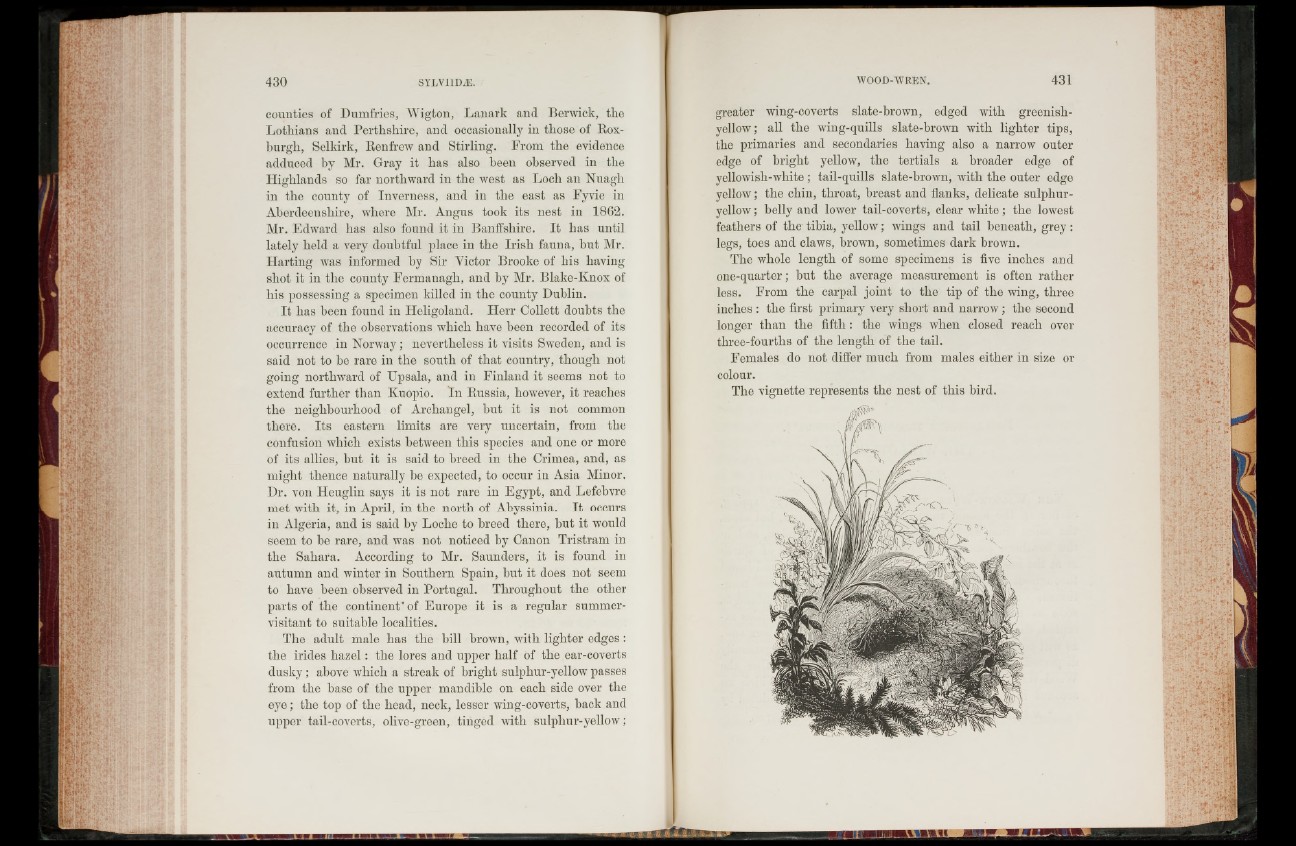
counties of Dumfries, Wigton, Lanark and Berwick, the
Lotliians and Perthshire, and occasionally in those of Roxburgh,
Selkirk, Renfrew and Stirling. From the evidence
adduced by Mr. Gray it has also been observed in the
Highlands so far northward in the west as Loch an Nuagh
in the county of Inverness, and in the east as Fyvie in
Aberdeenshire, where Mr. Angus took its nest in 1862.
Mr. Edward has also found it in Banffshire. I t has until
lately held a very doubtful place in the Irish fauna, but Mr.
Harting was informed by Sir Victor Brooke of his having
shot it in the county Fermanagh, and by Mr. Blake-Knox of
his possessing a specimen killed in the county Dublin.
It has been found in Heligoland. Herr Collett doubts the
accuracy of the observations which have been recorded of its
occurrence in Norway; nevertheless it visits Sweden, and is
said not to be rare in the south of that country, though not
going northward of Upsala, and in Finland it seems not to
extend further than Kuopio. In Russia, however, it reaches
the neighbourhood of Archangel, but it is not common
there. Its eastern limits are very uncertain, from the
confusion which exists between this species and one or more
of its allies, hut it is said to breed in the Crimea, and, as
might thence naturally he expected, to occur in Asia Minor.
Dr. von Heuglin says it is not rare in Egypt, and Lefebvrc
met with it, in April, in the north of Abyssinia. It occurs
in Algeria, and is said by Loclie to breed there, hut it would
seem to be rare, and was not noticed by Canon Tristram in
the Sahara. According to Mr. Saunders, it is found in
autumn and winter in Southern Spain, hut it does not seem
to have been observed in Portugal. Throughout the other
parts of the continent' of Europe it is a regular summer-
visitant to suitable localities.
The adult male has the hill brown, with lighter edges:
the irides h az el: the lores and upper half of the ear-coverts
dusky; above which a streak of bright sulphur-yellow passes
from the base of the upper mandible on each side over the
eye; the top of the head, neck, lesser wing-coverts, hack and
upper tail-coverts, olive-green, tinged with sulphur-yellow;
greater wing-coverts slate-brown, edged with greenish-
yellow ; all the wing-quills slate-brown with lighter tips,
the primaries and secondaries having also a narrow outer
edge of bright yellow, the tertials a broader edge of
yellowish-white; tail-quills slate-brown, with the outer edge
yellow; the chin, throat, breast and flanks, delicate sulphur-
yellow ; belly and lower tail-coverts, clear white; the lowest
feathers of the tibia, yellow; wings and tail beneath, grey:
legs, toes and claws, brown, sometimes dark brown.
The whole length of some specimens is five inches and
one-quarter; but the average measurement is often rather
less. From the carpal joint to the tip of the wing, three
inches : the first primary very short and narrow; the second
longer than the fifth : the wings when closed reach over
three-fourtlis of the length of the tail.
Females do not differ much from males either in size or
colour.
The vignette represents the nest of this bird.
w. ■
J